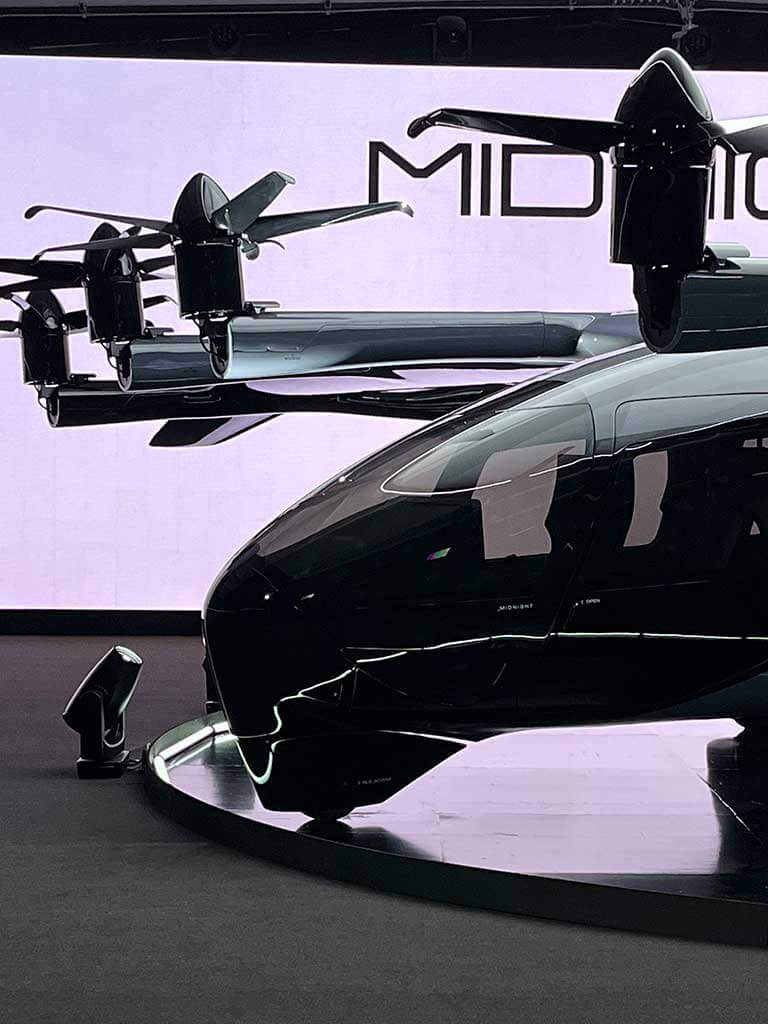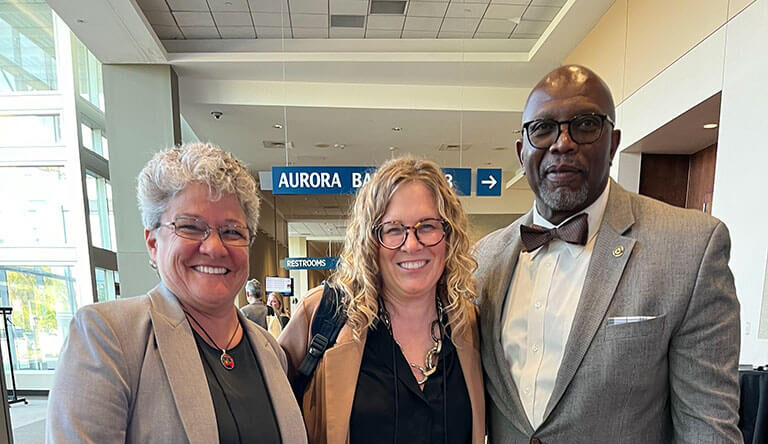In the ever-changing world of aviation, the Federal Aviation Administration (FAA) faces the monumental task of integrating cutting-edge technologies into the National Airspace System (NAS) while maintaining its unwavering commitment to safety. A recent panel discussion at the UAS Summit moderated by Michelle A. Duquette from MITRE Corporation and featuring FAA key leaders Jodi Baker, Deputy Associate Administrator for Aviation Safety, and Jeffrey Vincent, Executive Director of Unmanned Aircraft Systems (UAS) Integration shed light on the FAA’s strategies challenges, and progress in this critical endeavor.
Restructuring for Advanced Air Mobility
The FAA moved AAM integration efforts, initially housed in the Office of NextGen, to a separate Advanced Air Mobility (AAM) Integration Office. To aid in a smooth transition, the FAA took lessons learned from the successful approach of the UAS Integration Office. The move required a comprehensive project plan across multiple FAA departments.
This move, as explained by Baker, whose role, among other things, encompasses flight standards, aircraft certification, rulemaking and the integration of UAS and advanced air mobility (AAM), was not just a response to congressional directives but a recognition of the unique challenges posed by AAM operations, comparative to UAS.
Baker expounded on the unique AAM risk profile. ”We’re starting to talk about larger vehicles,” she explained. “We’re starting to talk about integration with other vehicles and aircraft in the NAS. Right now we’re starting to talk about carrying passengers. And that pops up higher on the risk continuum,” she continued. This distinction necessitated a specialized approach to integration.
Vincent further clarified the differentiation between UAS and AAM vehicles. While his office primarily deals with drones up to 1320 pounds for specific applications, AAM vehicles typically operate above 500 feet in controlled airspace and are designed for passenger transport.
Despite the creation of separate offices, both Baker and Vincent emphasized the close collaboration between the UAS and AAM integration teams. Regular meetings and knowledge sharing ensure alignment and cohesion in their approaches to airspace integration.
Adapting Regulatory Frameworks
The FAA’s journey in regulating emerging aviation technologies has been one of continuous evolution. Initially, the agency attempted to adapt existing regulatory frameworks to new technologies. Baker recalled the early days of integrating package delivery drones, where the FAA applied the Part 135 regulations typically used for traditional air carrier operations. However, this approach often resulted in complex exemptions with numerous conditions and limitations.
Recognizing the limitations of this strategy, the FAA has shifted towards developing more tailored solutions for UAS operations. Vincent described this new approach as “learn by doing,” which has enabled more rapid advancement in integrating UAS operations into the national airspace. This iterative method has proven effective and could serve as a template for AAM integration.

Streamlining the Rule making Process
One of the most significant challenges in regulating emerging technologies is the time-consuming nature of the rulemaking process. However, the FAA has made substantial progress in this area. Vincent noted that the agency has managed to reduce the time required for rulemaking significantly, with some rules now being completed in as little as three years.
Baker elaborated on the strategies employed to accelerate this process. By leveraging data gathered from waivers and exemptions, the FAA can now draft rules and preambles more efficiently. This approach allows for a shorter rulemaking period while still ensuring thorough consideration of safety and efficiency in the NAS.
Learning from Military Expertise
The FAA’s approach to integrating new aviation technologies has been significantly influenced by lessons learned from military drone operations. Vincent, drawing from his experience with the North Dakota Air National Guard, highlighted the valuable insights gained from military UAS use. “The military has been at the forefront of drone technology for decades,” he noted. “We’re looking at ways to leverage that expertise and apply it to civil aviation, particularly in areas like sense-and-avoid systems and secure communication protocols.”
Baker emphasized the importance of collaboration between military and civilian sectors, noting that the FAA is working closely with the Department of Defense to identify technologies that can be effectively transitioned to civilian applications. She said, ”This cross-pollination of ideas and technologies is crucial for advancing UAS integration safely and efficiently.”
Addressing Autonomous Systems Challenges
As the aviation industry moves towards more autonomous systems, the FAA faces new challenges in air traffic management. Both Baker and Vincent stressed the need for a common language when discussing risk and automation in the context of UAS integration.
Vincent highlighted the importance of clearly defining different levels of autonomy and their implications for air traffic control. “We need to be very clear about what we mean when we say ‘autonomous’,” he stated. “There’s a spectrum from fully manual to fully autonomous operations, and each level presents unique challenges for integration into the national airspace.” To address this, the FAA is developing a glossary of terms that precisely defines various levels of autonomy and associated risks. This initiative aims to ensure all stakeholders, from manufacturers to operators and regulators, share a common understanding.
Baker emphasized that this clarity is essential for effective policymaking, particularly when drafting regulations or conducting safety assessments. The FAA is actively working on developing frameworks to assess and manage the risks associated with various levels of automation. She explained, “Our goal is to create a regulatory environment that can adapt to technological advancements while maintaining the highest safety standards.”
Envisioning the Future of Airspace Integration
Terminology aside, operations with autonomy systems in the NAS present a complex set of issues. The long-term vision for UAS integration and air traffic management is one where autonomous systems and human-piloted aircraft coexist seamlessly in the national airspace. This future system will need to accommodate a diverse mix of traditional aircraft, remotely piloted drones, and fully autonomous vehicles, all operating at different altitudes and with varying capabilities.
To prepare for this future, the FAA is moving towards a more dynamic and flexible air traffic management system. Vincent emphasized the need for agility in their approach, recognizing that integration strategies may vary depending on the type and size of the aircraft.
Baker reiterated that safety remains the top priority as this future unfolds. The FAA is developing new safety metrics and risk assessment tools to ensure that the current high safety standards are maintained or even improved upon as the complexity of the airspace increases.
Collaborative Approach to Integration
In short, how does the FAA plan to operationalize and integrate new aviation technologies into the NAS? The FAA’s strategy for operationalizing and integrating new aviation technologies into the NAS is rooted in flexibility and collaboration. Vincent stressed the importance of a flexible, iterative approach, acknowledging that integration methods may need to be tailored to different types of aircraft and technologies. “We’re constantly learning and adapting our processes,” he said. “What works for integrating small drones might not be suitable for larger autonomous aircraft, so we need to remain agile in our approach.”
Baker emphasized the critical role of collaboration with industry partners throughout the integration process. By engaging with manufacturers, operators, and other stakeholders early on, the FAA can identify potential issues and develop practical, effective solutions.
Despite the numerous challenges, both Baker and Vincent expressed optimism about the FAA’s ability to safely and effectively integrate new technologies into the NAS. Their confidence stems from the agency’s adaptive approach, commitment to safety, and collaborative spirit.
As aviation technology continues to advance, the FAA’s efforts to integrate emerging entrants promise to usher in an exciting new era of flight, one that balances innovation with the paramount concern of public safety. Through careful planning, collaboration and a willingness to adapt, the FAA continues to pave the way for a future where traditional aircraft, drones and advanced air mobility vehicles share the skies safely and efficiently.

